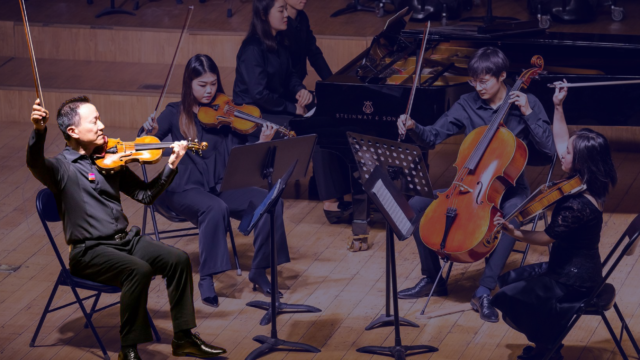Technical Notes | Diversity in the Orchestra Field 2023
We recognize that the demographic categories characterizing labor force data can aid us in understanding the broader themes at play, however they should not lead us to consider demographic groups as homogenous categories with shared experiences. In reality, of course, each group is — in itself — diverse.
Data Equity: Conventions and biases inform the ways in which we collect, analyze, and interpret quantitative data. With this in mind, we have taken several steps to minimize harm in the writing of this report, including the following:
- Centering the experiences of all historically marginalized racial/ethnic and gender groups in our analyses and reporting. Refraining from reporting across all BIPOC (Black, Indigenous, and People of Color) groups where the experiences of each individual group are too disparate to make sense as a whole (e.g., musicians).
- Reporting on populations that have historically been excluded due to their relatively small size, while also being clear where a small sample size inhibits our ability to disaggregate data or report on trend lines.
- Consulting with advisors who bring a wide range of lived and professional experiences to the debate.
- Acknowledging that diversity of representation is only one aspect of inclusion.
Representativeness: Our dataset is drawn from League member orchestras’ survey data. It is considered representative of the entire League membership. A constant sample analysis (of data from orchestras taking the survey in each of three designated years) verified that the data had not been skewed by shifts in annual survey participation.
Data limitations:
- Disaggregation: Relatively low sample sizes for music director and top executive roles — and for nonbinary, American Indian and Alaska Native, and Native Hawaiian and Other Pacific Islander people — limit our capacity for detailed analysis, particularly for trends over time and for disaggregation by smaller-to-medium budget and larger budget orchestras.
- Intersectionality: The survey data is supplied to the League each year by orchestra administrators. Administrators are encouraged to optimize inclusion and ensure that the dataset is as accurate as possible by asking each person reported to self-identify their racial/ethnic and gender demographics. In the 2022-23 season, 46% of all participating orchestras adopted this self-reported approach to collecting data for one or more orchestra roles. In all other cases, data was reported based on administrators’ perception of racial/ethnic and gender identity. Because the majority of the data is not self-reported, we are not able to make any analysis of the intersectionality between racial/ethnic and gender identities, or to report on the intersections between different racial and ethnic identities.
Analysis by orchestra budget category: Throughout the report, we distinguish between the demographics of smaller-to-medium budget orchestras (with annual budgets of less than $3 million) and larger budget orchestras (with annual budgets of $3 million and more), since the financial and operational profiles of each category are radically different. Smaller-to-medium budget orchestras employ fewer staff than larger budget orchestras, and the musicians they employ may work for multiple orchestras: only larger budget orchestras are typically able to provide full-time musician employment. Larger budget orchestras typically have the financial leverage needed to pay higher salaries and to hire consultants. Smaller-to-medium budget orchestras typically operate within local hiring markets, whereas larger budget orchestras typically operate within national hiring markets. It is important to note that the League membership includes a higher number of smaller-to-medium budget orchestras than larger budget orchestras.
Comparators: We consistently compare the orchestra population with 2021 U.S. Census population data estimates and 2022 Pew Research estimates of the nonbinary population. Where definitions are compatible, we also provide comparisons with data drawn from OPERA America’s 2022 demographic report and with data reported in the 2021 BoardSource report Leading with Intent.
Terminology: Throughout the report, we balance readability with technical accuracy. As a result, we refer throughout to “Native Hawaiian and Other Pacific Islander conductors” or “women top executives,” rather than the more authentic terminology of “conductors identified as Native Hawaiian and Other Pacific Islander” and “top executives identified as women.”
Please see Appendix 1: Methodology for more detail about data representativeness and confidence levels, plus the conceptual and analytical framework underpinning our analysis.
Jump to another page:
- Introduction
- Overview
- Key Findings
- Recommendations
- Definitions
- Technical Notes
- Detailed Analysis 1: By Orchestra Role (see full PDF)
- Detailed Analysis 2: By Demographic Group (see full PDF)
- Detailed Analysis 3: By Role and Budget Size (see full PDF)
- Detailed Analysis 4: Focus on the Pandemic Years (see full PDF)
- Appendix 1: Methodology
- Appendix 2: Stories of Progress in Orchestras
- Appendix 3: References
- Acknowledgements
This project was supported in part by an award from the Research Grants in the Arts program at the National Endowment for the Arts, Grant #1863433-38-20. Additional funding was provided by a generous grant from the Mellon Foundation, and by public funds from the New York City Department of Cultural Affairs in partnership with the City Council.
Related
-
Learn | Audience Engagement
Shaping a Positive Musical Learning Environment for Youth
Become a member
Thank you for your interest in the League of American Orchestras! We are dedicated to advancing the orchestral experience for all.
Join Now


